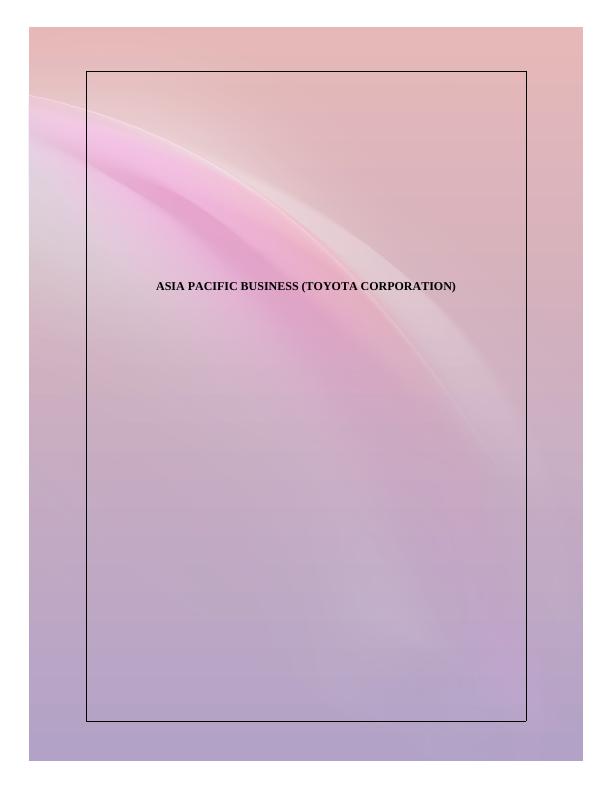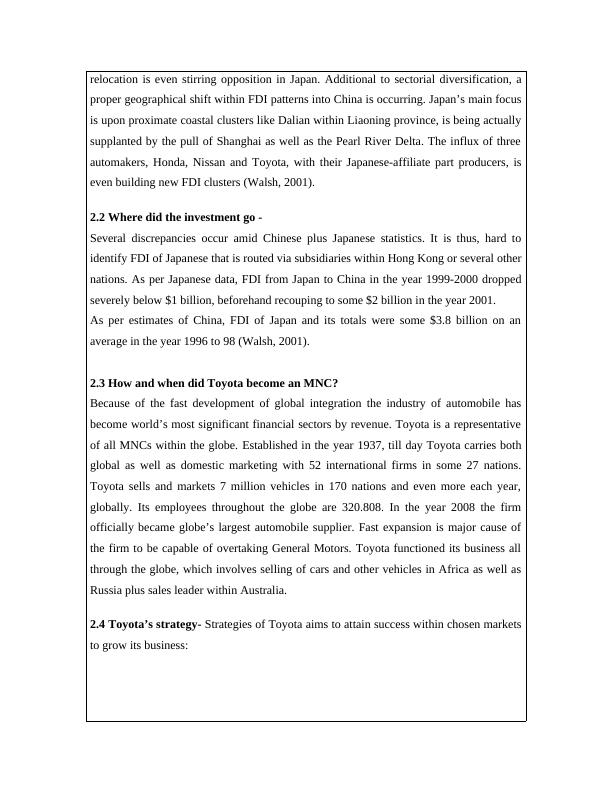Cross Industry Analysis of Toyota Corporation's Entry into Chinese Market
13 Pages3633 Words132 Views
Added on 2023-06-05
About This Document
This study evaluates Toyota Corporation's competitive position as an MNC in the global market after entering the Chinese market. It analyzes the industry, Toyota's FDI in China, market entry strategy, and benefits, capabilities, and resources possessed by Toyota to succeed.
Cross Industry Analysis of Toyota Corporation's Entry into Chinese Market
Added on 2023-06-05
ShareRelated Documents
End of preview
Want to access all the pages? Upload your documents or become a member.
Japanese Auto Makers and Their Competitive Place in Global Marketplaces: A Case Study of Toyota Corporation
|14
|3692
|297
MMM267 - Business Logistics Progress - Report
|15
|3936
|121
Japanese Automobile Manufacturers
|10
|2656
|95
Asia Pacific Business Assignment Solution
|12
|3483
|40
API 121 | RISE OF ASIA PACIFIC MULTINATIONALS
|11
|3082
|50
Toyota Competitive Strategy: Porter's Five Forces, SWOT and PESTLE Analysis
|8
|1765
|325




